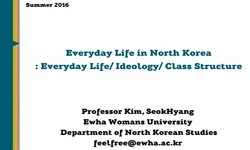Purpose Dense breasts have been suggested as a risk factor for breast cancer, but controversy still remains. This study evaluates the association of reproductive and hormonal factors with dense breasts among Korean women. Materials and Methods Using a...
http://chineseinput.net/에서 pinyin(병음)방식으로 중국어를 변환할 수 있습니다.
변환된 중국어를 복사하여 사용하시면 됩니다.
- 中文 을 입력하시려면 zhongwen을 입력하시고 space를누르시면됩니다.
- 北京 을 입력하시려면 beijing을 입력하시고 space를 누르시면 됩니다.



Reproductive and Hormonal Factors Associated with Fatty or Dense Breast Patterns among Korean Women
한글로보기https://www.riss.kr/link?id=A101595992
- 저자
- 발행기관
- 학술지명
- 권호사항
-
발행연도
2011
-
작성언어
-
- 주제어
-
등재정보
KCI등재,SCIE,SCOPUS
-
자료형태
학술저널
- 발행기관 URL
-
수록면
42-48(7쪽)
-
KCI 피인용횟수
13
- 제공처
-
0
상세조회 -
0
다운로드
부가정보
다국어 초록 (Multilingual Abstract)
Purpose Dense breasts have been suggested as a risk factor for breast cancer, but controversy still remains. This study evaluates the association of reproductive and hormonal factors with dense breasts among Korean women.
Materials and Methods Using a cross-sectional design, 516 women were recruited and classified for breast density patterns as being either fatty or dense, using the Breast Imaging Reporting and Data System (BI-RADS) of the American College of Radiology. Univariate and multivariate logistic regression models were used for statistical analysis.
Results In univariate logistic regression, older age, higher body mass index, older age at menarche,and oral contraceptive use were associated with more fatty breasts. On the contrary, longer duration of education, alcohol consumption, lower parity, menopause and use of hormone replacement therapy were associated with dense breasts. After adjustment, age and body mass index were inversely associated with breast density (p-value for trend <0.01, respectively),whereas nulliparous and premenopausal status were positively associated.
Compared to women who had ≥2 children, nulliparous women had an 11.8-fold increase of dense breasts (p-value for trend <0.01). Compared to postmenopausal women, premenopausal women had 2.4-fold increase of dense breasts (odds ratio, 2.42; 95% confidence interval, 1.36 to 4.32).
Conclusion Young age, lower body mass index, lower parity, and premenopausal status were significantly associated with dense breasts in Korea.
참고문헌 (Reference)
1 강은영, "한국여성에서 방사선학적 치밀 유방과 유방암 위험 요인과의 연관성" 대한가정의학회 28 (28): 937-942, 2007
2 조정진, "다기관 연구를 통해 살펴본 한국여성에서 유방밀도와 유방암 위험요인" 대한가정의학회 27 (27): 33-41, 2006
3 Bray F, "The changing global patterns of female breast cancer incidence and mortality" 6 : 229-239, 2004
4 Heng D, "Risk factors for breast cancer associated with mammographic features in Singaporean chinese women" 13 : 1751-1758, 2004
5 El-Bastawissi AY, "Reproductive and hormonal factors associated with mammographic breast density by age (United States)" 11 : 955-963, 2000
6 Chia KS, "Profound changes in breast cancer incidence may reflect changes into a Westernized lifestyle: a comparative population-based study in Singapore and Sweden" 113 : 302-306, 2005
7 Gram IT, "Percentage density, Wolfe’s and Tabár’s mammographic patterns: agreement and association with risk factors for breast cancer" 7 : R854-R861, 2005
8 원영주, "Nationwide Cancer Incidence in Korea, 2003~2005" 대한암학회 41 (41): 122-131, 2009
9 Butler LM, "Menstrual and reproductive factors in relation to mammographic density: the Study of Women's Health Across the Nation (SWAN)" 112 : 165-174, 2008
10 Nagata C, "Mammographic density and the risk of breast cancer in Japanese women" 92 : 2102-2106, 2005
1 강은영, "한국여성에서 방사선학적 치밀 유방과 유방암 위험 요인과의 연관성" 대한가정의학회 28 (28): 937-942, 2007
2 조정진, "다기관 연구를 통해 살펴본 한국여성에서 유방밀도와 유방암 위험요인" 대한가정의학회 27 (27): 33-41, 2006
3 Bray F, "The changing global patterns of female breast cancer incidence and mortality" 6 : 229-239, 2004
4 Heng D, "Risk factors for breast cancer associated with mammographic features in Singaporean chinese women" 13 : 1751-1758, 2004
5 El-Bastawissi AY, "Reproductive and hormonal factors associated with mammographic breast density by age (United States)" 11 : 955-963, 2000
6 Chia KS, "Profound changes in breast cancer incidence may reflect changes into a Westernized lifestyle: a comparative population-based study in Singapore and Sweden" 113 : 302-306, 2005
7 Gram IT, "Percentage density, Wolfe’s and Tabár’s mammographic patterns: agreement and association with risk factors for breast cancer" 7 : R854-R861, 2005
8 원영주, "Nationwide Cancer Incidence in Korea, 2003~2005" 대한암학회 41 (41): 122-131, 2009
9 Butler LM, "Menstrual and reproductive factors in relation to mammographic density: the Study of Women's Health Across the Nation (SWAN)" 112 : 165-174, 2008
10 Nagata C, "Mammographic density and the risk of breast cancer in Japanese women" 92 : 2102-2106, 2005
11 Boyd NF, "Mammographic density and the risk and detection of breast cancer" 356 : 227-236, 2007
12 Ursin G, "Mammographic density and breast cancer in three ethnic groups" 12 : 332-338, 2003
13 Boyd NF, "Mammographic breast density as an intermediate phenotype for breast cancer" 6 : 798-808, 2005
14 Jeffreys M, "Life course breast cancer risk factors and adult breast density (United Kingdom)" 15 : 947-955, 2004
15 Boyd NF, "Heritability of mammographic density, a risk factor for breast cancer" 347 : 886-894, 2002
16 Ursin G, "Greatly increased occurrence of breast cancers in areas of mammographically dense tissue" 7 : R605-R608, 2005
17 McCormack VA, "Ethnic variations in mammographic density: a British multiethnic longitudinal study" 168 : 412-421, 2008
18 Maskarinec G, "Ethnic differences in mammographic densities" 30 : 959-965, 2001
19 Maskarinec G, "Ethnic and geographic differences in mammographic density and their association with breast cancer incidence" 104 : 47-56, 2007
20 Pike MC, "Estrogens, progestogens, normal breast cell proliferation, and breast cancer risk" 15 : 17-35, 1993
21 Stuedal A, "Does breast size modify the association between mammographic density and breast cancer risk" 17 : 621-627, 2008
22 McCormack VA, "Breast density and parenchymal patterns as markers of breast cancer risk: a meta-analysis" 15 : 1159-1169, 2006
23 Titus-Ernstoff L, "Breast cancer risk factors in relation to breast density (United States)" 17 : 1281-1290, 2006
24 Kim SH, "Analysis and comparison of breast density according to age on mammogram between Korean and Western women" 42 : 1009-1014, 2000
25 Tseng M, "Acculturation and breast density in foreign-born, U.S. Chinese women" 15 : 1301-1305, 2006
동일학술지(권/호) 다른 논문
-
- 대한암학회
- Jing-Tian Xie
- 2011
- KCI등재,SCIE,SCOPUS
-
- 대한암학회
- 이동수
- 2011
- KCI등재,SCIE,SCOPUS
-
- 대한암학회
- 이익재
- 2011
- KCI등재,SCIE,SCOPUS
-
- 대한암학회
- 김한조
- 2011
- KCI등재,SCIE,SCOPUS
분석정보
인용정보 인용지수 설명보기
학술지 이력
| 연월일 | 이력구분 | 이력상세 | 등재구분 |
|---|---|---|---|
| 2024 | 평가예정 | 해외DB학술지평가 신청대상 (해외등재 학술지 평가) | |
| 2021-01-01 | 평가 | 등재학술지 선정 (해외등재 학술지 평가) |  |
| 2020-12-01 | 평가 | 등재후보로 하락 (해외등재 학술지 평가) |  |
| 2010-01-01 | 평가 | 등재학술지 유지 (등재유지) |  |
| 2008-01-01 | 평가 | 등재학술지 유지 (등재유지) |  |
| 2005-05-27 | 학술지명변경 | 한글명 : 대한암학회지 -> Cancer Research and Treatment |  |
| 2005-01-01 | 평가 | 등재학술지 선정 (등재후보2차) |  |
| 2004-01-01 | 평가 | 등재후보 1차 PASS (등재후보1차) |  |
| 2002-01-01 | 평가 | 등재후보학술지 선정 (신규평가) |  |
학술지 인용정보
| 기준연도 | WOS-KCI 통합IF(2년) | KCIF(2년) | KCIF(3년) |
|---|---|---|---|
| 2016 | 3.58 | 0.89 | 3.01 |
| KCIF(4년) | KCIF(5년) | 중심성지수(3년) | 즉시성지수 |
| 2.62 | 2.28 | 1.846 | 0.26 |




 KCI
KCI






